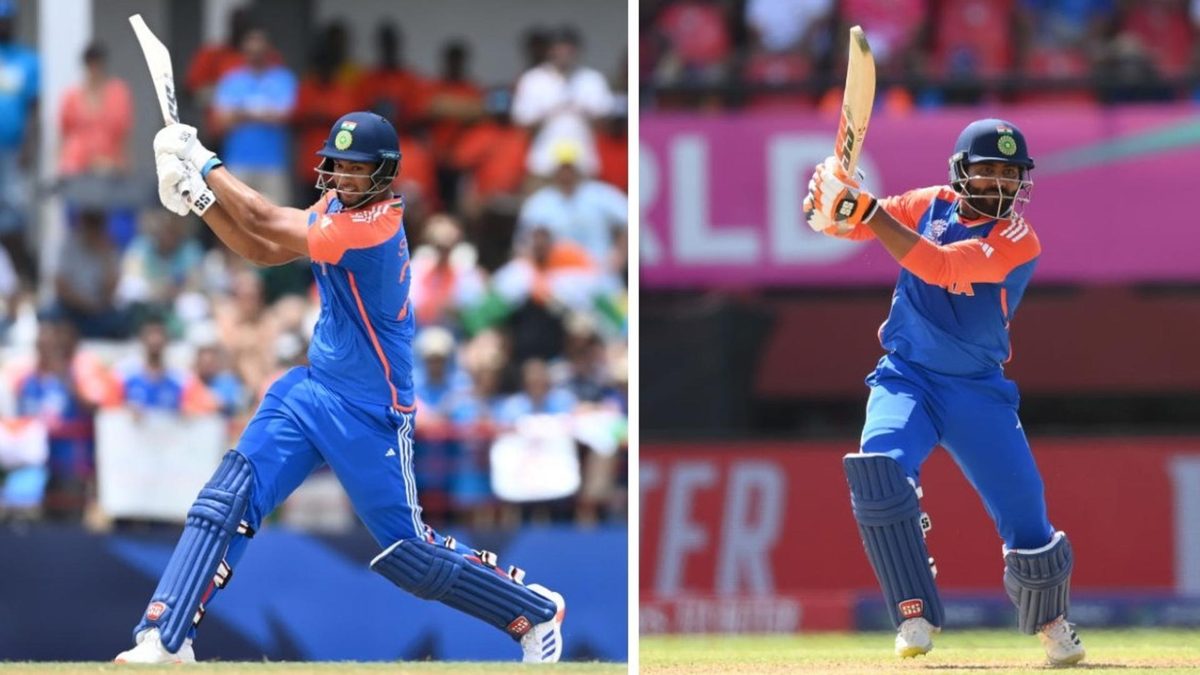
England captain Jos Buttler won the toss and chose to field first in a game that had already been delayed by rain. India lost Virat Kohli early, as he attempted a swipe off Reece Topley and lost his leg stump. Rishabh Pant also departed for a single-digit score shortly before another rain break arrived.
India's best phase of the innings came after the resumption, as Rohit Sharma and Suryakumar Yadav put on 73 runs off 50 balls for the third wicket, no mean feat on a pitch that saw several deliveries stay low. Hardik Pandya was promoted to No.5 ahead of Shivam Dube when Rohit was bowled by Adil Rashid, but Dube did not come out at No.6 either. Instead, Ravindra Jadeja came to the wicket when Suryakumar Yadav was dismissed in the 16th over.
Who blinks first? India and England's cat-and-mouse game
As far as Shivam Dube is concerned, his best performances in the IPL have come when batting at No.4. But more crucially than his batting number, he has thrived when facing spinners in the middle overs. In fact, Dube was picked for India primarily for his ability to effectively hit spin. He has, however, had to slide down in order for India to fit in Rishabh Pant and Suryakumar in the top four.
SKY makes the most of the full toss and sweeps it for a boundary! 🏏
— Star Sports (@StarSportsIndia) June 27, 2024
Will #SuryakumarYadav build a partnership with the skipper, #RohitSharma to guide India to an above-par total? #SemiFinal2 👉 #INDvsENG | LIVE NOW | #T20WorldCupOnStar pic.twitter.com/0X7JzlZUNj
When Suryakumar was dismissed, England's frontline spinner Adil Rashid had bowled out. The four overs after that could well have been covered by England's pacers; between Reece Topley, Jofra Archer, Sam Curran and Chris Jordan there were overs in the tank. India may have felt that sending in Dube would lead to him facing only pace bowling.
As a result, India probably promoted Jadeja thanks to them thinking the spinners were more or less bowled out, as well as his ability to hit pace at the death. Jadeja is not an effective hitter of spin, as a career strike rate of 112 against slower bowlers shows. The predicted lack of spin bowling was another reason for not sending Dube in.
But England could respond whichever way India went. Because they sent in Jadeja, Jos Buttler could get in another over from part-timer Liam Livingstone. If Dube had walked in, they may have gone with a pacer there instead. Neither Jadeja nor Hardik Pandya could take Livingstone down in that over, and he finished with just 24 runs conceded in four overs.
Jadeja over Dube: Masterstroke or misstep?
The choice facing India, given the options at Buttler's disposal, was whether to take the risk of Jadeja facing one over of spin and two overs of pace or Dube facing three overs of pace. On the face of it, choosing Jadeja over Dube was not hugely flawed. But the numbers show they may just have missed a trick.
In the last two years, Dube has struck at 148 against seam bowling, struggling primarily against high pace. Jadeja has struck at a marginally higher rate of 149. On a slowish wicket in Guyana, with the pacers not finding much value in cranking it up, he may have been able to get a hold of them. This, combined with Jadeja's significant drop in scoring rate against spin, may well have pointed to Dube as the better option.
Read more: How India turned a corner at the 2024 T20 World Cup
But in the end, despite not maximising the final Livingstone over, Jadeja finished on 17 not out off nine balls to take India to a solid total of 171-7. Meanwhile, Dube came in at number seven and promptly nicked his first ball to the wicketkeeper. Axar Patel was also an option at No.6, but India have seemed less keen to prioritise him as their finisher over Jadeja and/or Dube.
Going off outcomes, India will certainly argue they made the right call. It was a marginal one, and the value in either decision can be seen.
Follow Wisden for all T20 World Cup updates, including live scores, match stats, quizzes and more. Stay up to date with the latest cricket news, player updates, team standings, match highlights and video analysis.








